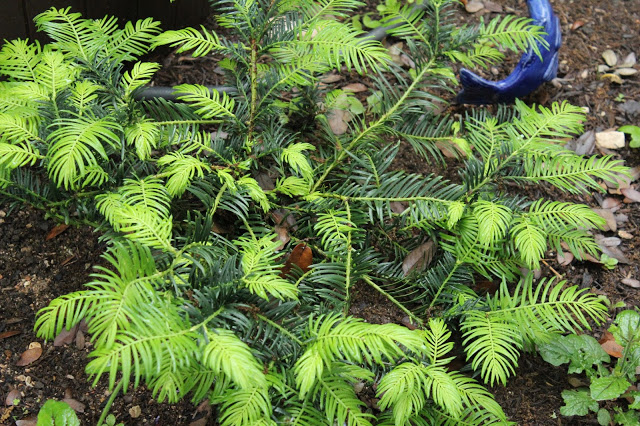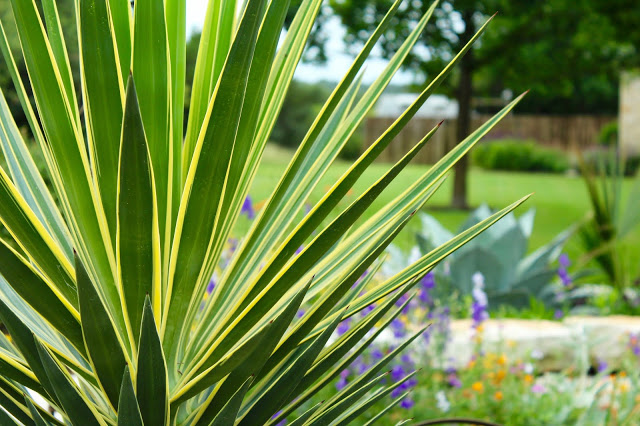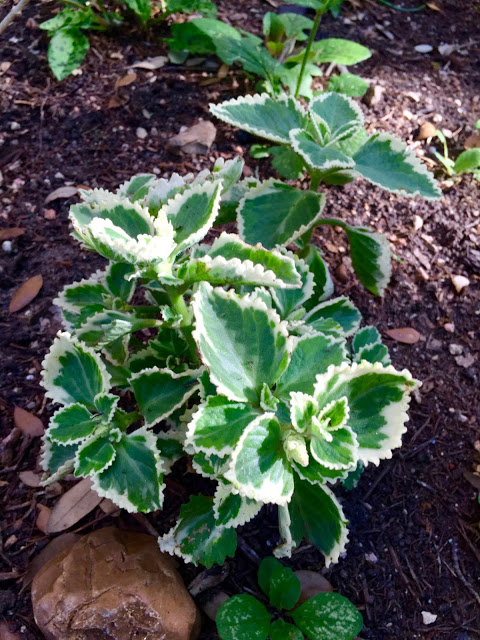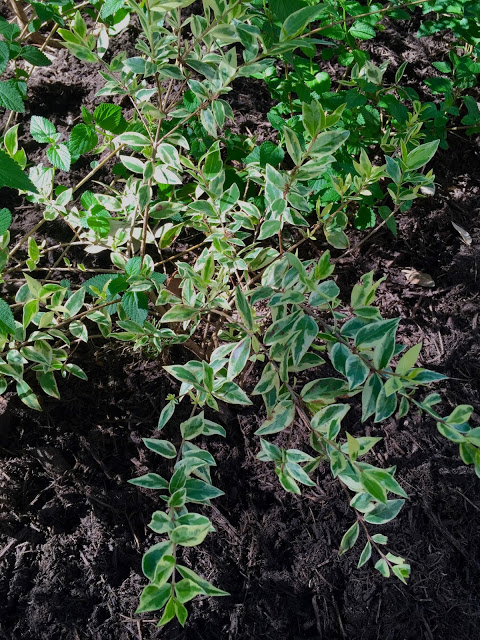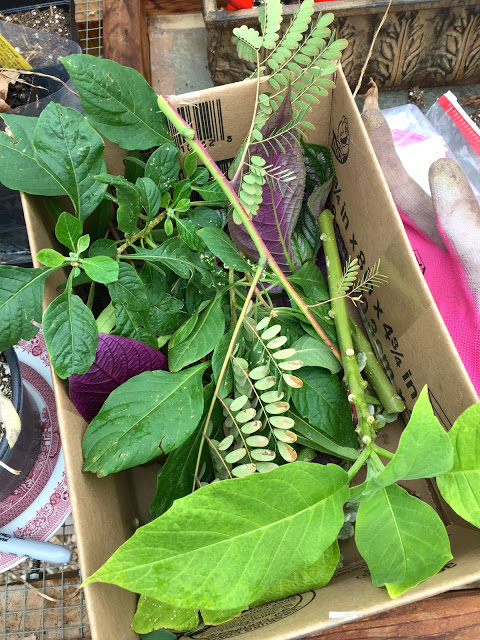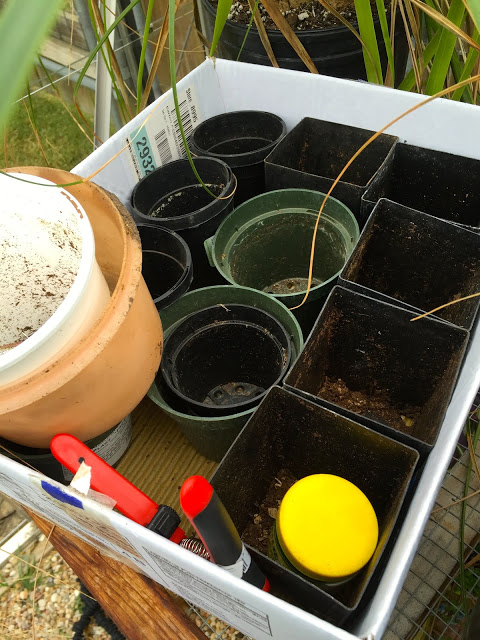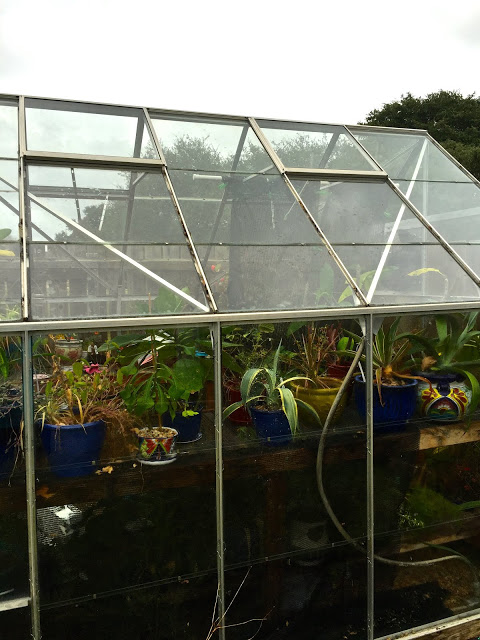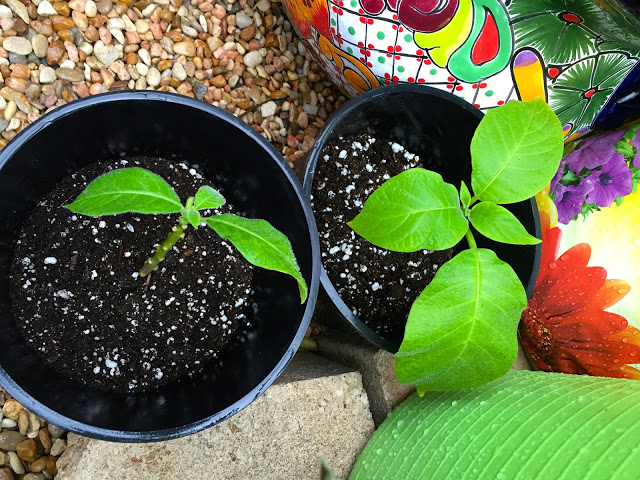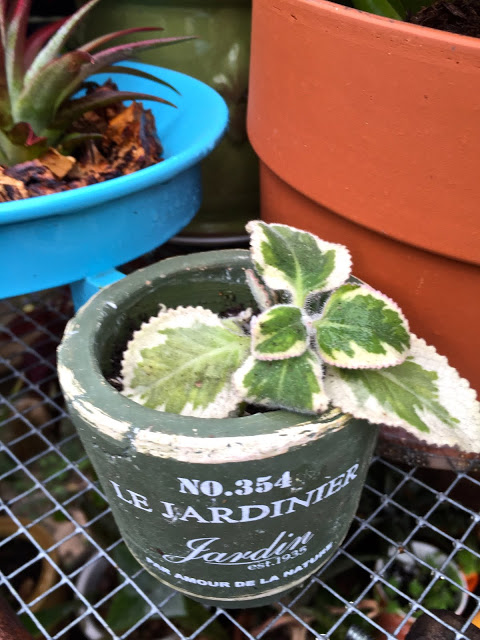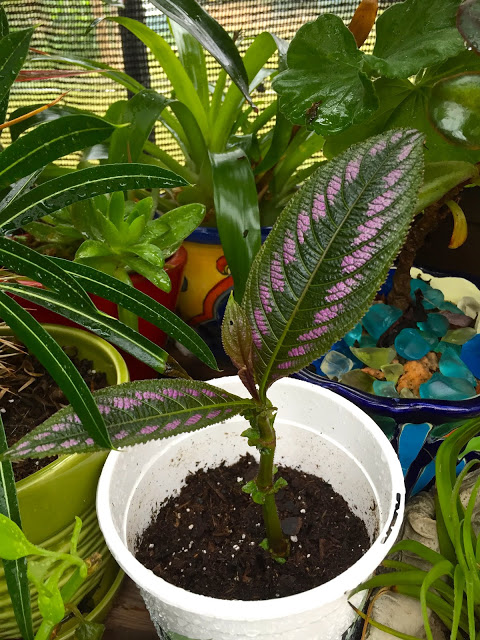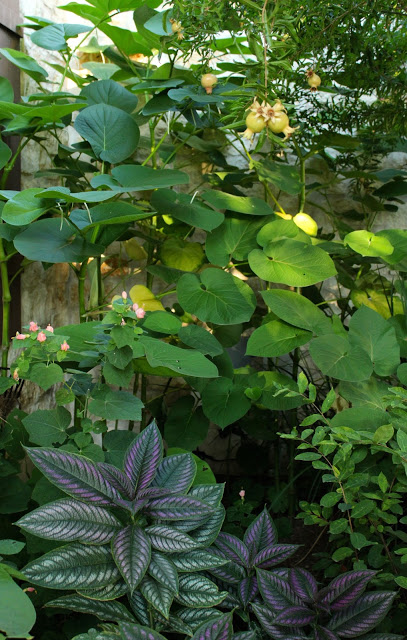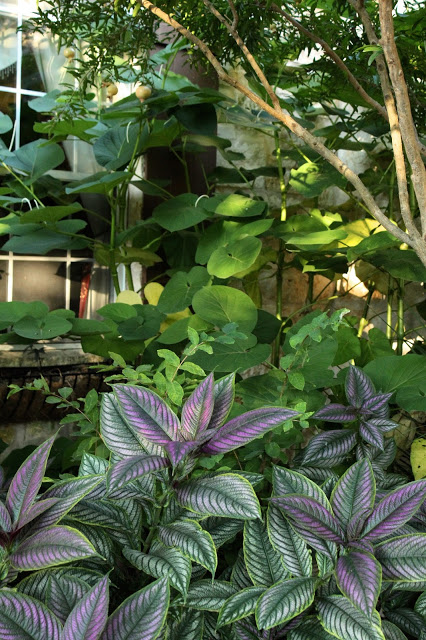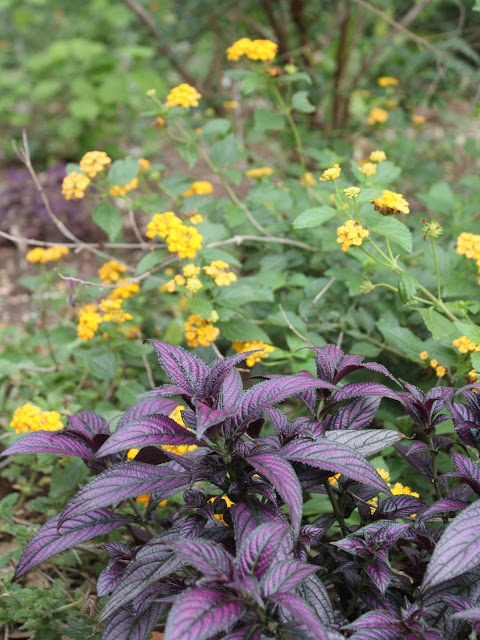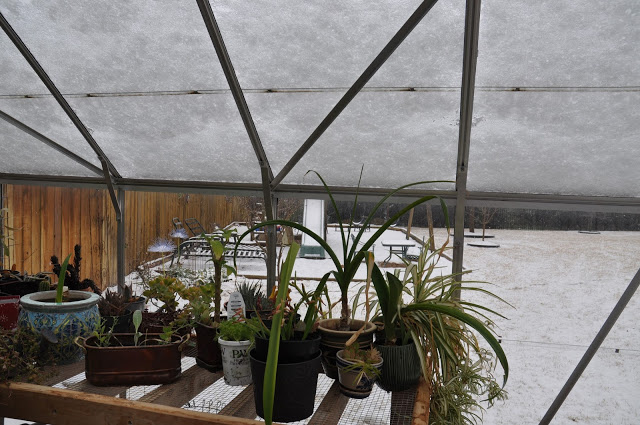Fresh foliage follow-up …
Having blogged HERE about everything that was blooming in my garden this weekend, today I’ll join Pam Penick of Digging, and highlight some of the lush foliage in my garden.
Refusing to be dismissed by a lack of blooms, many of my favorite plants in the garden earn their status with colorful, textured foliage that delights season after season.
Last fall I planted a few more heuchera — actually gold zebra heucherella — the lime and burgundy plants in the foreground. I was delighted when they reached out with these wispy white blooms, almost like exclamation points emerging from their core.
I try to limit the annuals in my garden because I have enough work caring for the perennials as it is, but I reliably plant coleus in many places each spring. Their hot, popping colors brighten any shady spot and bring an energy to the garden that I just love in our Texas summers.
My Cephalotaxus, or Japanese plum yews, continue to thrive in the mostly shade areas of the front and side gardens. I love seeing the new growth arrive, heralded by the luscious lime foliage. I began using these in the garden about 3 years ago and they are tough as nails and satisfy my wish to have other conifers in the landscape.
This cardoon qualifies as a foliage favorite for sure. Fuzzy, spiny, and dusty, these leaves are always showing off in the garden.
This Yucca aloifolia, commonly known as Spanish Dagger or Bayonet, means serious business. Unlike the variegated ‘bright edge’ and ‘color guard’ yuccas that live in other parts of my garden, this guy’s leaves are sword-like and quite dangerous to work around. This pup popped up when I had to move its momma several years ago because she was getting too tall for the front of the bed. Her little one is following in her footsteps, so this one may soon move to another bed behind the back fence.
My Persian shields never fully died back this winter, so they are already getting to be a nice size in the shade garden. Score!
Plectranthus amboinicus, also known as Cuban Oregano, Mexican Mint, Spanish Thyme and Indian Mint, is a staple in my ornamental gardens. It is an herb and can be used in a wide variety of dishes. But I grow it for it’s cool, textured and succulent leaves. Mature, it’s about 18 inches tall and wide and makes a nice front of bed plant. It’s an annual here, but can easily be propagated from cuttings, which is what I do. It’s not a true mint – it’s botanically closer to Swedish ivy, which I also grow for similar places in the garden.
Another fabulous variegated abelia. I’m kicking myself for not keeping the tag. I love that this one is creamy and mild, while the ‘Twist of Lime’ and ‘Kaleidoscopes’ I love are spicier — with lime, bronze and reddish foliage.
Sparkler sedges are scattered throughout my garden. This winter I thought I’d lost one in the back, but it’s coming back from the roots. Sadly, it has reverted and is coming up solid green.
I’m about to plant several more of these variegated dwarf firebushes for their hot, tropical color.
That’s the foliage tour for today. What’s your favorite foliage in the garden?



